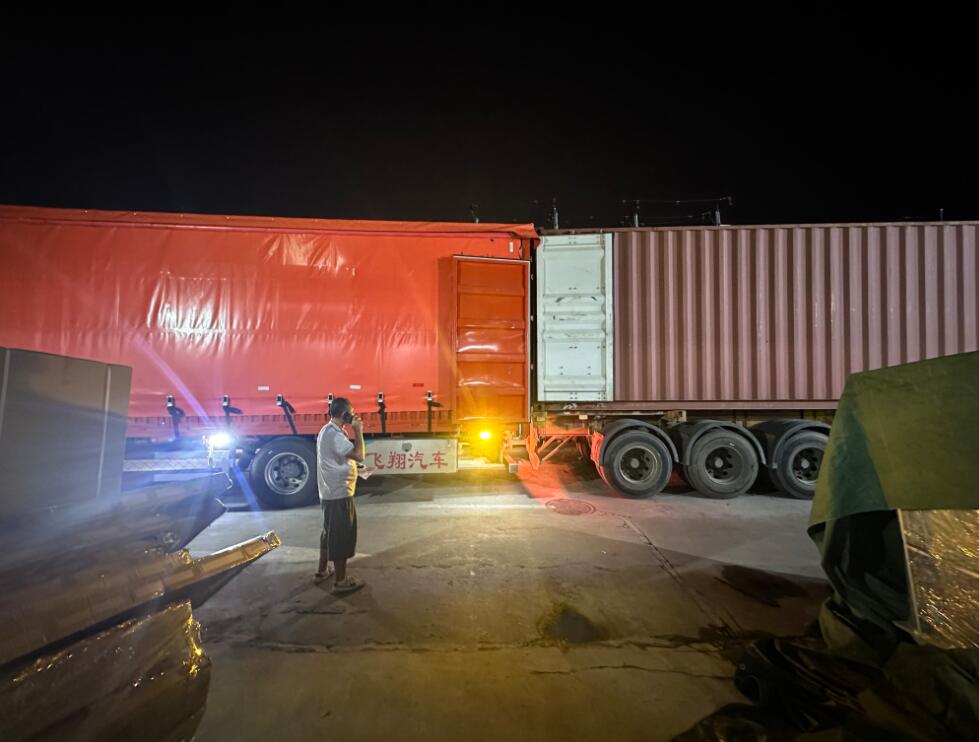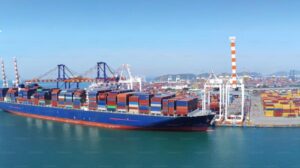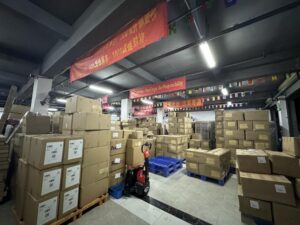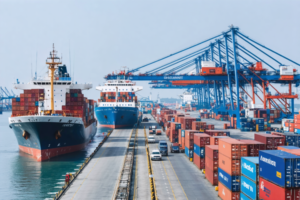Sea freight remains the most economical way to move goods from China to the USA, especially for medium to large shipments. However, many importers struggle to decide between FCL (Full Container Load) and LCL (Less than Container Load) shipping.
As the Co-founder of DFH Logistics, I’ve spent more than 12 years helping thousands of U.S. importers and Amazon sellers find the most cost-effective shipping solutions. Choosing between FCL and LCL isn’t just about container size—it affects your cost, delivery time, customs process, and cargo safety.
In this guide, I’ll explain the difference between FCL and LCL, when each method is more suitable, and how DFH Logistics can help you choose the smartest option for your next shipment.
In short, FCL is best for larger, time-sensitive shipments that can fill a full container, while LCL suits smaller, flexible shipments that share space with other importers.
If you want to know how the sea freight from China to USA working, you can also read our detailed article on
👉 How to ship from China to the USA by sea?
to better understand routes, costs, and customs procedures.
What Does FCL and LCL Mean in Sea Freight?
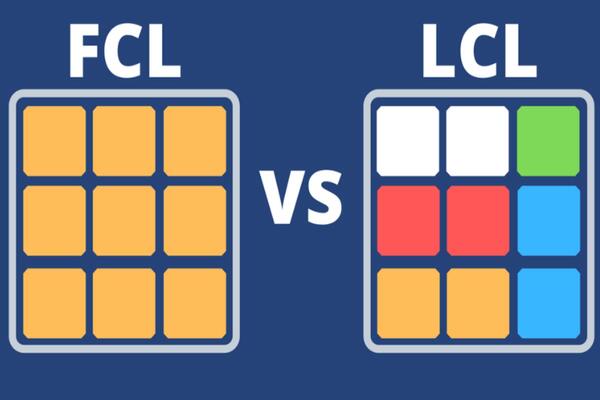
FCL (Full Container Load) means your goods occupy an entire 20ft or 40ft container, and the space is exclusively yours. This provides privacy, security, and faster handling since there’s no need to wait for other shipments to be consolidated or unloaded.
LCL (Less than Container Load) allows your cargo to share container space with shipments from other importers. This is managed through a process called consolidation, where multiple shipments are combined in China and then separated (deconsolidated) upon arrival in the U.S.
In real-world terms:
- FCL is like renting an entire truck for yourself.
- LCL is like sharing that truck with others and paying only for your portion of space.
At DFH Logistics, we coordinate both FCL and LCL options door-to-door. For LCL, our Shenzhen warehouse team consolidates goods from different suppliers for free within 30 days, saving you both time and cost.
You can also check our guide on how to choose the right freight forwarder in China to understand how professionals simplify this process.
How Do FCL and LCL Shipping Costs Compare?
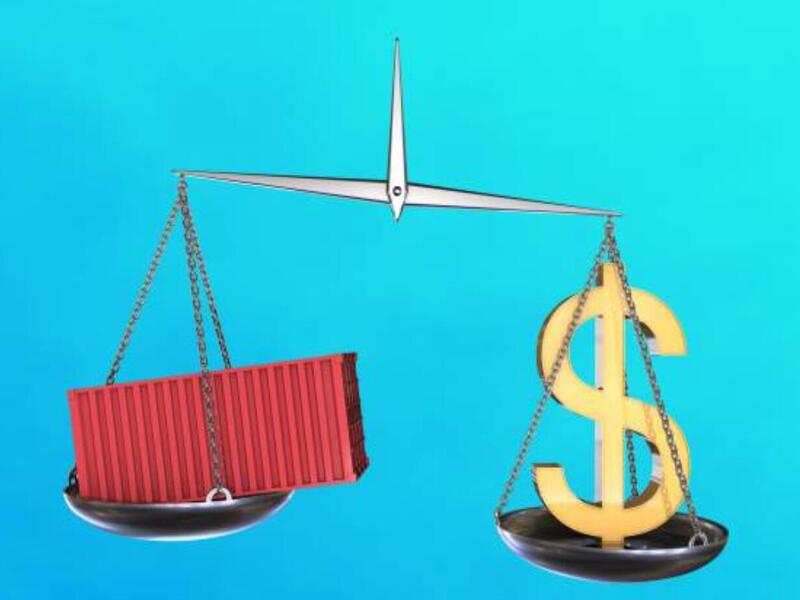
When deciding between FCL and LCL, cost is often the first question importers ask. The main difference is how pricing is calculated:
- FCL Cost: You pay a fixed rate per container. Whether it’s half full or completely full, the rate remains the same.
- LCL Cost: You pay based on the volume of your goods (measured in cubic meters, or CBM). You share the space and costs with others.
Here’s a general cost reference from China to the USA in 2025:
| Mode | Volume Range | Average Cost | Delivery Time |
|---|---|---|---|
| FCL 20ft | Up to 28 CBM | USD 2,500 – 3,500 | 25–35 days |
| FCL 40ft | Up to 58 CBM | USD 4,000 – 5,800 | 25–35 days |
| LCL | 1–15 CBM | USD 80 – 120 per CBM | 30–40 days |
When does FCL become cheaper than LCL?
If your shipment is around 15–18 CBM or more, the total cost for LCL often exceeds an FCL container rate. For example, 18 CBM at $100/CBM = $1,800, but with handling and consolidation fees, the total can reach $2,500 — similar to an FCL 20ft container.
Therefore, once your goods exceed around half a container, it’s usually more cost-efficient to switch to FCL.
For further reading on pricing calculation methods, refer to
<a href="https://www.freightos.com/freight-resources/freight-calculator/" target="_blank"
rel="noopener" title="Freightos Freight Calculator">Freightos Freight Calculator, a reliable global logistics resource explaining CBM-based pricing.
What Are the Main Differences Between FCL and LCL Shipping?
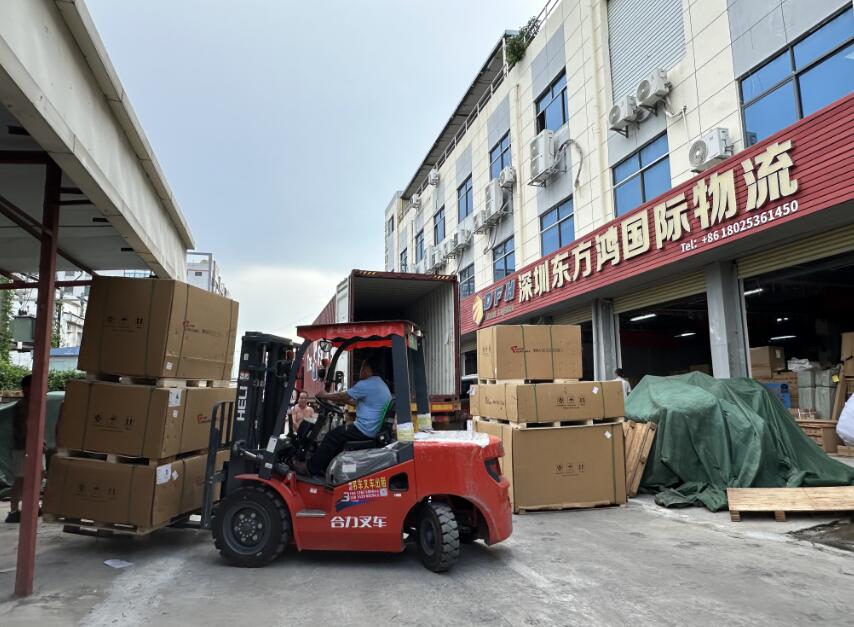
FCL and LCL differ mainly in cost structure, delivery time, and cargo handling. FCL (Full Container Load) gives one importer full use of a container—faster, safer, and ideal for large shipments. LCL (Less than Container Load) lets multiple shippers share space, offering flexibility and lower costs for smaller volumes but with longer transit and higher handling risks.
While FCL and LCL both transport cargo across the ocean, their processes differ significantly in speed, safety, and control. Here’s a closer look:
| Criteria | FCL | LCL |
|---|---|---|
| Container Usage | You rent the full container | You share container space |
| Cost Structure | Fixed per container | Priced per CBM + handling fees |
| Transit Time | Faster, direct shipping | Slower, includes consolidation/deconsolidation |
| Cargo Handling | Loaded once, sealed until arrival | Loaded/unloaded multiple times |
| Risk of Damage | Minimal | Higher due to mixed cargo |
| Customs Clearance | Simple, single consignee | Delays possible if other shippers face inspection |
| Ideal For | 15+ CBM or high-value cargo | Small or mixed shipments |
From my experience, many importers underestimate how much time and risk consolidation adds to LCL shipments. While LCL is cheaper for small loads, FCL offers far smoother customs clearance and lower handling risk.
When Should You Choose FCL Shipping?
FCL shipping is the preferred choice for many established importers because it provides full control over the cargo. You should choose FCL if:
Your goods exceed 15–18 CBM.
At this point, FCL becomes more economical per unit.You’re shipping high-value or fragile items.
Since no other cargo shares the space, your goods remain untouched from loading to arrival.You want faster customs clearance.
FCL containers are processed under one consignee, reducing the chance of being delayed by another shipper’s paperwork.You plan regular or repeat shipments.
For Amazon FBA sellers or wholesalers, FCL offers predictable pricing and transit time.
At DFH Logistics, we help clients secure space even during peak seasons. Our team manages the entire chain — from pickup at your supplier, booking vessel space, to door delivery in the USA — so your goods arrive without surprises.
You can also visit U.S. Customs and Border Protection Import Guidelines
for an overview of U.S. import procedures and how FCL/LCL shipments are processed upon arrival.
When Is LCL Shipping a Better Option?
LCL shipping is ideal for small or irregular shipments, especially if you’re testing new products or managing orders from multiple suppliers.
You should choose LCL if:
You ship less than 10–15 CBM.
Paying for a whole container isn’t cost-effective at this volume.You source from multiple factories.
DFH’s Shenzhen warehouse consolidates goods from different suppliers free for 30 days, and we repack to maximize space efficiency.You need flexibility.
You can ship smaller batches frequently without waiting to fill an entire container.You’re starting a new business.
Many new importers use LCL first to test logistics timing and customs procedures before scaling up.
However, keep in mind that LCL involves extra handling during loading, sorting, and unpacking. That’s why DFH offers protective repacking and photo confirmation services — to ensure your goods stay in perfect condition.
If you’re new to large-volume shipping, you can read our
guide on how to reduce shipping costs from China
to make the most out of your next container shipment.
How Long Does Sea Freight from China to the USA Take?
Transit time by sea depends on several factors — including port locations, carrier schedules, and customs procedures on both sides.
Generally, FCL shipments are faster because the container goes directly from one port to another without waiting for consolidation or deconsolidation, while LCL shipments may take a few days longer due to extra handling and warehouse processing.
Sea freight from China to the USA usually takes between 15 and 45 days, depending on the origin port in China, the destination region in the U.S., and the shipping method used (FCL or LCL). FCL shipments are generally faster, averaging 15–35 days, while LCL shipments may take 5–10 days longer due to consolidation and deconsolidation procedures.
Below is a more detailed transit time reference table from major Chinese ports to different U.S. regions:
| Origin Port (China) | Destination Region (USA) | Typical Destination Ports | FCL Transit Time | LCL Transit Time |
|---|---|---|---|---|
| Shanghai | U.S. West Coast | Los Angeles, Long Beach | 15–18 days | 25–30 days |
| Shanghai | U.S. Central Region | Dallas, Chicago (via West Coast rail) | 25–30 days | 30–40 days |
| Shanghai | U.S. East Coast | New York, Savannah, Charleston | 30–35 days | 35–45 days |
| Shenzhen (Yantian/Shekou) | U.S. West Coast | Los Angeles, Oakland | 15–20 days | 25–32 days |
| Shenzhen (Yantian/Shekou) | U.S. Central Region | Houston, Dallas | 25–32 days | 30–40 days |
| Shenzhen (Yantian/Shekou) | U.S. East Coast | New York, Norfolk | 30–38 days | 35–45 days |
| Ningbo | U.S. West Coast | Los Angeles, Seattle | 16–22 days | 25–33 days |
| Ningbo | U.S. East Coast | New York, Savannah | 30–36 days | 35–45 days |
| Qingdao / Tianjin | U.S. West Coast | Los Angeles, Seattle | 18–25 days | 28–35 days |
| Qingdao / Tianjin | U.S. East Coast | New York, Baltimore | 32–40 days | 37–47 days |
| Xiamen / Fuzhou | U.S. West Coast | Los Angeles | 17–23 days | 27–33 days |
| Xiamen / Fuzhou | U.S. East Coast | New York, Miami | 32–42 days | 37–47 days |
Additional Factors Affecting Transit Time
Customs Clearance Efficiency:
Delays may occur if your documentation is incomplete or if your cargo is selected for inspection. DFH’s experienced customs team helps you prepare all required paperwork to prevent delays.Seasonal Peak Periods:
During busy shipping seasons (such as pre-Christmas or Chinese New Year), vessel space and port congestion may extend transit time by several days.Weather and Port Congestion:
Typhoons or heavy congestion at ports like Los Angeles or Savannah can affect schedule reliability. DFH continuously monitors sailing schedules and reroutes shipments if needed.
Professional Advice
At DFH Logistics, we recommend door-to-door DDP sea freight for U.S. importers — especially for LCL shipments — to minimize customs delays and simplify delivery.
We coordinate export declaration, U.S. import clearance, and final delivery to your warehouse, ensuring your goods arrive safely and on schedule.
How to Decide Between FCL and LCL for Your Shipment?
Here’s how I guide my clients at DFH when choosing between FCL and LCL:
| Situation | Recommended Option | Reason |
|---|---|---|
| Cargo volume above 15 CBM | FCL | Cheaper per unit, faster transit |
| Small or trial order (under 10 CBM) | LCL | Budget-friendly for low volume |
| Fragile or expensive goods | FCL | Avoids extra handling |
| Multiple suppliers in China | LCL | Consolidation reduces cost |
| Urgent or time-sensitive shipment | FCL | Shorter transit and clearance time |
| Budget-focused but not urgent | LCL | Cost savings on shared space |
If you’re not sure, share your shipment details with our DFH team — we’ll compare both options side by side, showing total cost, delivery time, and customs handling for transparent decision-making.
You can also learn how DFH helps importers simplify the full process in
Door-to-door freight forwarding from China to USA.
How Can DFH Logistics Help You Ship from China to the USA?
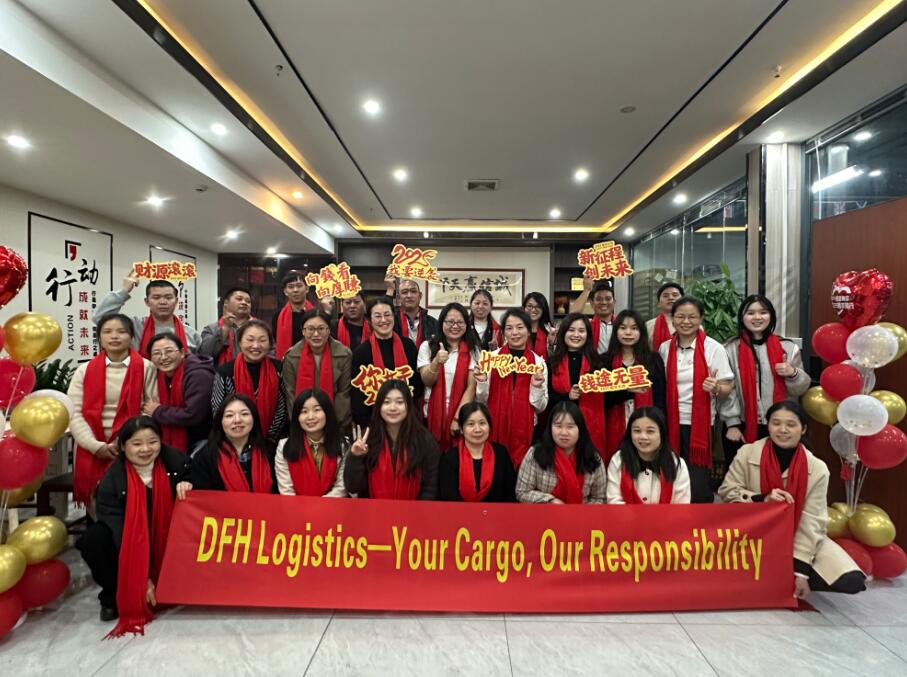
At DFH Logistics, we don’t just move containers — we manage your entire logistics journey from start to finish.
With over 12 years of professional experience, our team has handled thousands of sea freight shipments from China to the USA, helping importers, e-commerce sellers, and wholesalers ship confidently through both FCL and LCL solutions.
We understand that every shipment is different. Whether you’re sending one pallet or a full container, we tailor the most efficient and cost-effective plan to suit your cargo type, delivery timeline, and destination.
Comprehensive Door-to-Door Management
We take full control of your shipment — from factory pickup to final delivery. Our process includes:
- Nationwide Supplier Pickup: We collect goods directly from any city in China — Guangzhou, Shenzhen, Ningbo, Yiwu, Shanghai, or Qingdao — using our own truck fleet or contracted partners.
- Free 30-Day Consolidation Warehouse: Ideal for importers buying from multiple suppliers. We inspect, photograph, label, and repack your cargo for maximum space efficiency before shipping.
- Professional Export Customs Clearance: Even if your supplier lacks export rights, we handle all export documentation and declaration under our company license to ensure legal, smooth clearance.
- Sea Freight Booking at Competitive Rates: Through partnerships with major carriers like COSCO, CMA CGM, and MSC, we guarantee space availability and optimal sailing schedules to U.S. ports.
- Import Clearance and DDP Services: Our U.S. agents manage import customs clearance and duty payment on your behalf, delivering your goods under Delivered Duty Paid (DDP) terms — no hidden charges, no extra paperwork.
- Final Delivery Across the U.S.: From ports to doorsteps, we handle nationwide delivery — including commercial addresses, personal addresses, and Amazon FBA warehouses.
Why Importers Choose DFH Logistics
Transparent, All-Inclusive Pricing
You’ll receive clear, detailed quotations — no hidden surcharges or unexpected terminal fees. Our team calculates the true door-to-door cost before shipment begins.Reliability Built on Experience
Over 30,000 clients across the U.S. have trusted DFH to manage their supply chain. We’ve built a track record of on-time deliveries and smooth customs clearance, even during peak seasons.Real-Time Tracking and Personalized Support
Every shipment is assigned a dedicated logistics specialist who updates you at each step — pickup, loading, departure, customs, and delivery. You always know where your cargo is.Customized Solutions for Every Business Size
Whether you’re a first-time importer or a seasoned wholesaler, we provide tailored FCL and LCL strategies that balance cost, speed, and reliability.Strong Global Partnerships
DFH’s established network of carriers, customs brokers, and last-mile couriers ensures your cargo moves efficiently from China’s factory floors to your U.S. warehouse.
Conclusion
The right choice between FCL and LCL depends on your shipment size, budget, and timeline.
If your shipment is small and flexible, LCL helps reduce initial costs. But once you grow to consistent or large volumes, FCL provides better control, faster clearance, and overall savings.
If you’re unsure which option is best for your next shipment, contact DFH Logistics — our professional team will design a door-to-door solution tailored to your cargo volume, budget, and business goals.

